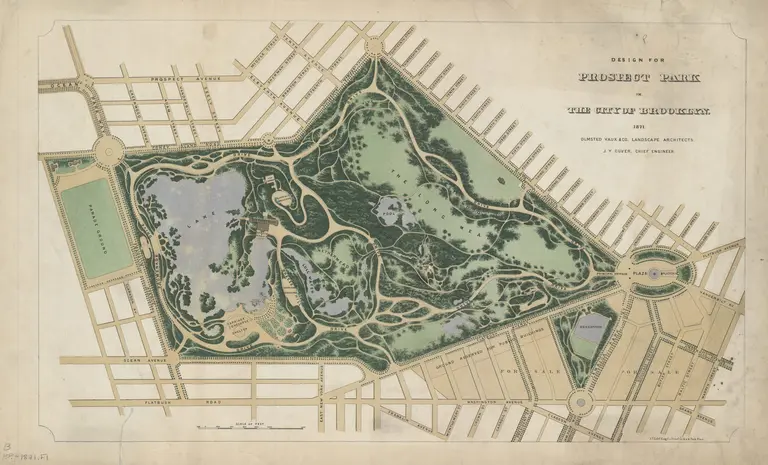In 1894, the first bike lane in America was built on Brooklyn’s Ocean Parkway

Photo by Kai Brinker on Flickr
While many New Yorkers can be seen trekking through Brooklyn on their bikes today, the borough’s infatuation with cycling actually dates back to the 19th century. On June 15, 1894, Ocean Parkway became the first street in the U.S. to have a designated bike lane. The nearly five-mile stretch of road was designed by Frederick Law Olmsted and Calvert Vaux, the urban planning masterminds behind Central Park and Prospect Park. Originally, their design for Ocean Parkway was to be one of four spokes originating at Prospect Park and spanning across the borough. Today, the road doesn’t actually start at the park but runs parallel to Coney Island Avenue to reach the beach.
Brooklyn was its own city when Ocean Parkway was first developed, and its design process was overseen by the city’s mayor, Frederick Schroeder. In 1866, Olmsted and Vaux developed plans for a network of wide, tree-lined streets that could cut across the borough, making its open spaces more accessible. Both Eastern Parkway, which runs from Prospect Park to Crown Heights, and Ocean Parkway, run along the park and were modeled after Avenue de L’Imperatrice (now Avenue Foch in Paris). While Ocean Parkway actually reaches the Atlantic Ocean, Eastern Parkway stopped short of its intended destination as the Prospect Expressway intervenes.
Developers divided Ocean Parkway by its function, with the central lane intended for private vehicles, intended for pleasure driving. Two tree-lined paths flanked the middle, allowing for leisurely strolls for pedestrians. The parkway’s center lane became a popular place for horse and carriage races, with jockeys referring to it as the Ocean Parkway Speedway. About six clubs competed along Ocean Parkway, each with its own private track.
On the official opening day of the bike path, nearly 10,000 cyclists reportedly came to ride. To keep up with demand, the path was widened in 1896. And in an effort to control racing, a speed limit of 12 miles per hour on the path and 10 miles per hour on the parkway was enforced. The parkway’s horse racing ended in 1908 when open betting was banned
In the 1950s, Ocean Parkway’s northernmost section was replaced with the Prospect Expressway. To stop the further disruption of the street’s original design, the city designated Ocean Parkway as a scenic landmark in 1975. According to the designation report, Ocean Parkway “established a new concept in road building.”
Although the first bike lanes were created over 100 years ago, riders today face similar problems as our cycling ancestors. Whenever the city paved part of streets specifically for cyclists, carts, wagons and other vehicles immediately began blocking them. In 1899, a law was proposed that would fine any vehicle $10 if parked in the wrong lane. Today, cars and trucks parked in the bike lane face a $115, although the law is rarely enforced.
Riding bikes for fun or as a commute-replacement for the failing subways and buses continues to grow in popularity for New Yorkers. As 6sqft recently learned, more commuters bike to work in New York than any other city in the United States. On one particular night on Brooklyn’s Hoyt Street, 442 bikes traveled the street in one hour, compared to just 331 cars. In the same hour in 2011, just 141 bikes were counted.
RELATED:




























